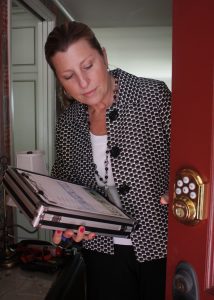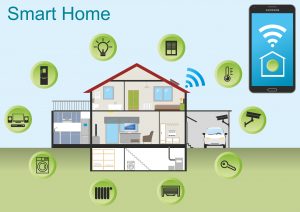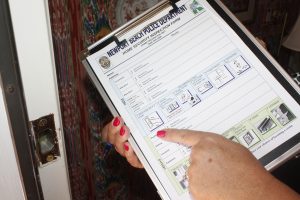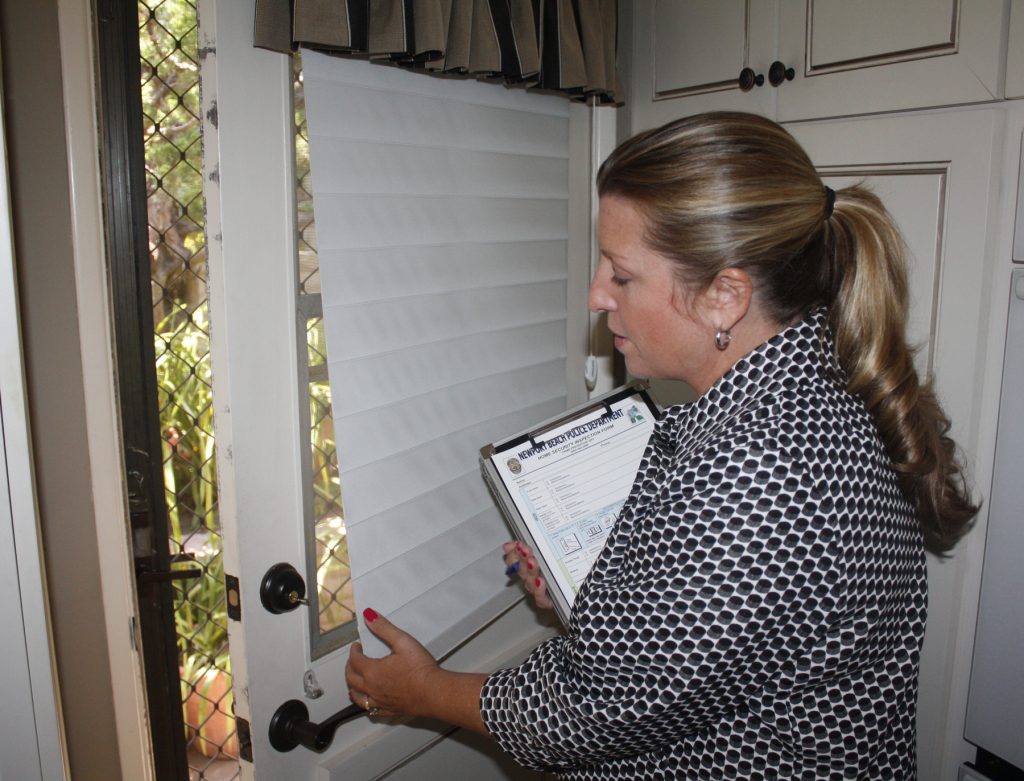
— Photo by Christopher Trela ©
Having your home burglarized can be a shattering experience.
In fact, shattering windows is the latest tactic of burglars, while the shattered feelings of security are the most common end results for the majority of Newport Beach residents whose homes have been ransacked.
According to Andi Querry, crime prevention officer at the Newport Beach Police Department, “Part 1” crimes in the city – which includes property crimes and crimes of violence – are down 1.4 percent.
Much of this reduction in large part comes from aggressive and creative patrolling strategies throughout the city, coupled with alert residents who called Police Dispatch to report suspicious activity.
However, the broad expanse east of MacArthur Blvd., referred to as Area 4, is experiencing an increase in home break-ins by innovative burglars, who often use peripheral access roads, footpaths and greenbelts to ingress the supposedly more secure gated communities.
Although more burglars than in the past may be using this method in their approaches to neighborhoods, their entry techniques are short of sophisticated: rocks or garden furniture slammed through large windows, even though the glass is tempered, double paned and wired with sophisticated sensors and alarms.
French doors often surrender faster than others. Because of the security apparatus, the burglars’ entry is quick and focused. Through experience, they know generally where jewelry and money are stashed.
First responders admit that they are not really the first responders.

— Photo credit: Pixabay
“It is the ‘first observer,’ the neighbor who senses something amiss and who calls the cops,” shared Sgt. John Thulin, patrol commander for Area 4.
“If you see something, say something. We are in the business to be bothered,” emphasized Area 2 commander Lt. Rachel Johnson.
“Home security comes in layers, both internally and externally,” noted Querry. “I want people to know immediately when something is suspicious.”
Those layers are both basic and electronically sophisticated. One of the oldest and most efficient alerts is a dog with sensitive hearing and an obnoxious bark. However, one break-in artiste stocked his pockets with doggy treats, and almost immediately become Fido’s best friend.
Deadbolt locks whose receivers are secured to the doorframe via one and one-half inch screws form a primary barrier.
Motion detecting floodlights are also basic, but very effective. When these are coupled with obviously placed security cameras outside the home, and TV simulators flashing from inside chosen windows, burglars may opt to skip your home for one less secure.
Other security options include inside cameras; motion-activated-sound-warnings and camera-coupled doorbells; window-break sensors; sliding door and window sensors; broadcast cameras indoors and outdoors that contact your smart phones in real time; and regular video cameras that play back motion history – often for up to six months.

— Photo by Christopher Trela ©
Querry likes the newer motion-activated smart phone systems, because as she points out, “they require you to be engaged in your own home security.”
Some allow you to actually talk to a suspicious person, and to set off an alarm remotely. Images are stored to aid police in follow-up investigations.
“If there is something you see in your neighborhood that causes concern, let us know about it,” Chief of Police Jon Lewis urges. “The goal is to prevent burglaries from happening in the first place.”
Querry adds that if you’re away from home when you receive smart phone notifications of possible intruders, call the non-emergency police number at (949) 644-3717. “This way, no other agency will answer, thereby delaying response,” she said.
Home security checklists are available by emailing Querry at aquerry@nbpd.org. And because the holidays and vacations are upon us, Querry encourages everyone leaving town to request a Vacation Check for the period of time you plan to be away, conducted almost daily by a team of Police Department volunteers.

— Photo by Christopher Trela ©




